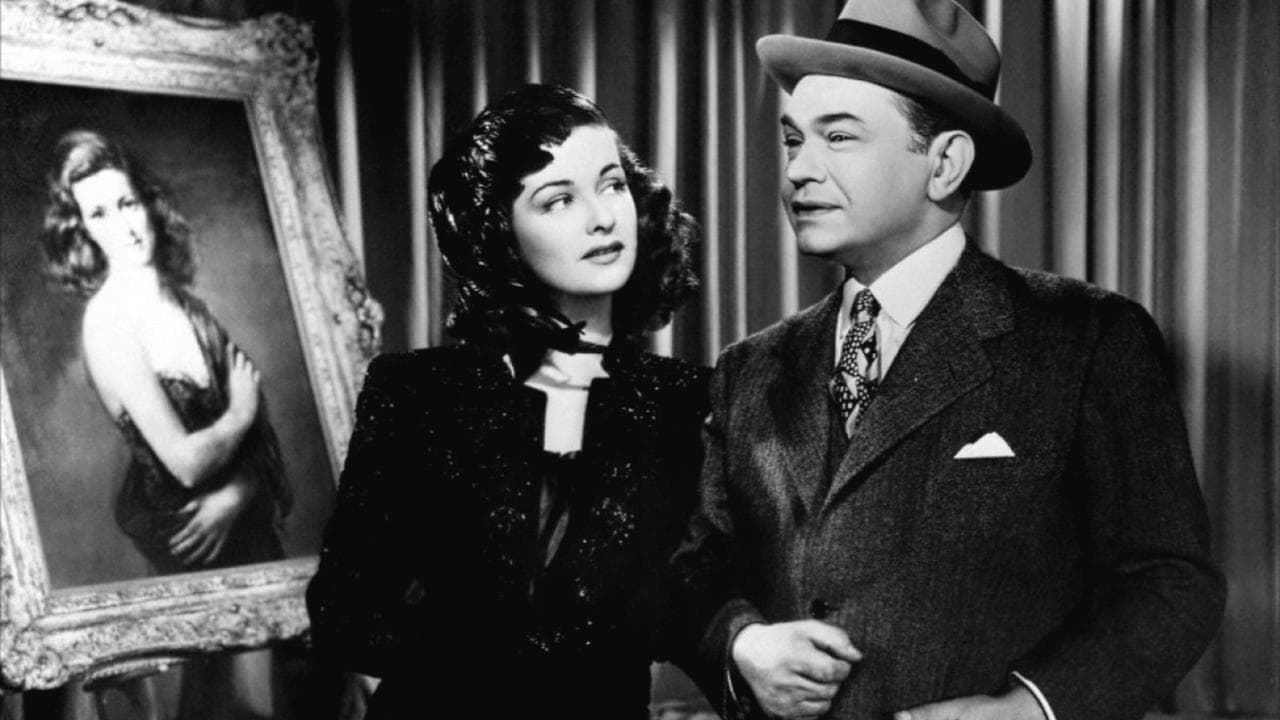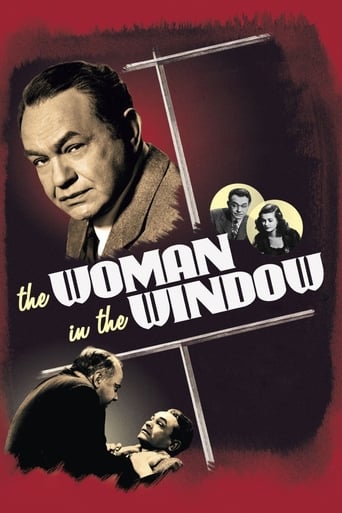

He is a middle aged bachelor of some stability and position, when he sees a fascinating portrait in a window of a lady, and in the next moment sees the lady herself, watching his reaction, which appears to be a sport of hers, as many come to watch that portrait of her. She is not wicked or lewd, but she is dangerously attractive and has apparently attracted the wrong kind of man, who comes importuning as professor Robinson is cozying up to her, which leads to terrible complications, and there the nightmare starts, which mercilessly rolls on getting constantly worse as murders and casualties start piling up...It's one of Fritz Lang's most accomplished nightmare thrillers, maybe his best, and it's perfectly real all the way. Joan Bennett is attractive enough to be convincing, at her first entrance she is in fact absolutely irresistible, while Raymond Masset adds to the towering nightmare by his creeping investigations. You couldn't get into worse trouble than Robinsin does here, and the conclusion is perfectly logical in all its tragedy, while there still remains something left to surprise him...
... View MoreThe Woman in the Window is an intriguing film-noir, with a likable lead character.While you could get annoyed with the surprise ending that it all was a dream, I found it quite amusing and like that it was something different. It also makes some of the finer details more feasible, even though that doesn't change your experience of those things as they have already happened, it can change your view of them in hindsight or on a re-watch. Like stabbing someone to death through a suit with a pair of scissors, which seems like an impossible outcome, especially without a great deal of strength behind it, but how else would a civilized non violent person commit such an act in his own mind. Also, tagging along with a friend in the murder investigation or leaving blood on the wire fence when you were worried about every small detail at the apartment. Because they are only in his mind, they can be a means to an end and not just poor writing. Anyway, though unendearing, it is a solid to good film with quality acting.Richard: There are only three ways to deal with a blackmailer. You can pay him and pay him and pay him until you're penniless. Or you can call the police yourself and let your secret be known to the world. Or you can kill him.
... View Morebecause it is more than a "film noire". using the ingredients who defines the genre. because it is an inspired and surprising reflection about sin. and, not the last, because it propose a different, impeccable Edward G. Robinson who did more than a great job. short, it is a film who must see. not for a special/unique motif but as a delightful story who reminds the old Oriental wise fairy tales. because, in a special way, it is a religious film. and not surprising from Fritz Lang , for who the exploration of evil was a lead theme.
... View MoreThis movie is a cinematic masterpiece. There is nothing that can be done to improve this movie. It is as close to perfection as is humanly possible to achieve. Outstanding acting, a wonderfully engaging story, snappy dialog, and terrific cinematography make this movie one of the best ever. Edward G. Robinson shows why he is one of the greatest actors in history and Joan Bennett was fantastic as the woman who is the center of all the ruckus. But it was Dan Duryea's performance that is particularly noteworthy. Further compliments are superfluous. The movie speaks for itself. Its continuity, marvelous acting and fast pace are evidence of great direction. What a great movie!
... View More